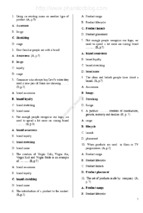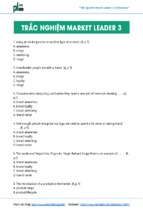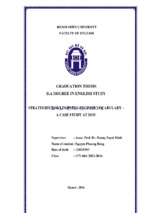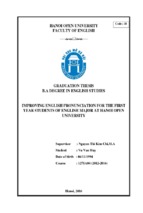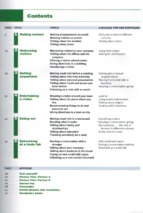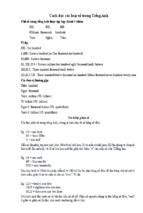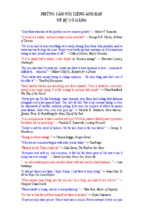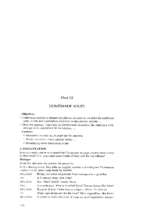Voice and Speaking Skills For Dummies®
Visit www.dummies.com/cheatsheet/voiceandspeakingskillsuk to view this book's cheat sheet.
Table of Contents
Introduction
About This Book
Conventions Used in This Book
What You’re Not to Read
Foolish Assumptions
How This Book is Organised
Part I: Introducing the Human Voice
Part II: Beginning with Voice Basics
Part III: Playing Your Instrument Well
Part IV: Beating the Voice Gremlins
Part V: Engaging with a Broader Public
Part VI: The Part of Tens
Icons Used in This Book
Where to Go from Here
Part I: Introducing the Human Voice
Chapter 1: Having a Great Voice
Trumpeting the Voice
Exploring the power of your voice
Reaping the rewards of a great voice
Making small changes for big impact
Enjoying the Advantages of Speaking Well
Being understood clearly
Being a pleasure to listen to
Feeling more confident
Conveying authority
Influencing others
Inspiring others
Entertaining people
Connecting better
Finding Out about Voice Coaching
Discovering your natural voice
Facing the challenge
Thinking About What You Want to Develop in Your Own Voice
Getting people to listen to you
Working with your accent
Saying what you mean and meaning what you say
Developing a robust, healthy voice
Becoming fluent
Identifying Good Voices
The alive voice
The authentic voice
The connecting voice
The voice that has something to say
Starting Out
Choosing your method
Finding yourself in your voice
Chapter 2: Exploring the Amazing Human Voice
Discovering the Power of Voices
Hearing All the Sounds that Make Up Your Voice
Dispelling Voice Myths
Myth 1: You’re stuck with your voice
Myth 2: Your voice is out of your control
Myth 3: Words matter more than voice
Myth 4: Only looks really count
Digging Deeper into How You React to Voices
Experiencing sound’s physical power
Responding to sound’s vibrations
Making meaning from voice sounds
Chapter 3: Getting to Know Your Own Voice
Hearing What You Sound Like
Listening to a recording
Listening from inside
Getting feedback
Recognising your unique sound
Gathering Insights into Your Voice
Picking up the traces
Sounding out your life story
Revealing Your Different Voices
Shifting pitch
Finding your natural pitch
Taking Stock
Evaluating your voice
Assessing how your voice fits you
Preparing for Your Journey
Beginning with the nuts and bolts
Getting in the right frame of mind
Putting yourself in the driver’s seat
Part II: Beginning with Voice Basics
Chapter 4: Discovering How to Breathe Well
Making a Sound: How Your Voice Works
Demystifying your breath: It’s just hot air
Amplifying the sound
Getting Started with Breathing
Becoming aware of your breathing
Thinking low
Engaging your diaphragm
Taking full breaths
Breathing to Communicate
Producing a steady stream of air
Speaking on air
Turning breath into sound
Play-Acting with Sound and Breathing
Getting big and theatrical
Surprising yourself
Declaiming like an actor
Pushing the boat out
Remembering to breathe!
Chapter 5: Rediscovering Relaxation
Finding Freedom For a Fine Sound
Readying Your Body to Speak
Freeing up every part of your body
Relaxing around your vocal cords
Standing Steady and Balanced
Rediscovering your balance
Adopting a floating posture
Going Deeper into Relaxation With Body and Mind
Blending Relaxation with Readiness: Not Too Tight, Not Too Loose
Involving your whole body
Relishing the state of readiness
Enjoying perpetual motion
Chapter 6: Turning Sound into Speech
Making Your Voice Clearly Understood
Forming the words
Warming up your facial muscles
Giving your air attitude
Bringing Your Words to Life with Long Sounds
Stretching out the long vowels
Enjoying the character of words
Stretching out the long consonants
Enjoying the expressive qualities of long consonants
Adding Sparkle with Short Sounds
Colouring your speech with short consonants
Expressing emotion with short vowels and consonants
Part III: Playing Your Instrument Well
Chapter 7: Exploring Volume and Speed
Turning Up (and Down) the Volume
Projecting your voice
Gaining attention
Toning your voice down
Creating magical effects with volume
Appreciating the power of pianissimo
Building the power and finding the dimmer switch
Finding the Best Speed
Slowing down for gravitas and clarity
Taking time in your head
Enjoying a sprightly tempo
Chapter 8: Filling Your Speech with the Sounds of Music
Making Your Point Strongly
Exploring emphasis
Understanding English emphasis
Ending on the low note of authority
Getting into Rhythm
Moving to the melody
Varying the rhythm
Playing with pitch
Reviving the Ancient Art of Rhetoric
Dancing in three time
Building up momentum
Rhyming and chiming
Enjoying the Silence
Chapter 9: Expressing Yourself Fully with the Power of Resonance
Beginning to Explore Resonance
Expressing resonance
Varying your pitch
Championing Your Chest Voice
Producing your chest voice
Using your chest voice
Getting Excited about Your Head Resonance
Producing head tones
Using your head voice
Warming to Your Heart Voice
Finding your passion
Using your heart voice
Going with Your Gut: Speaking with Gravitas and Authenticity
Producing the voice of your gut
Using the voice of your gut
Understanding the Gatehouse of Your Voice: Your Throat
Giving yourself permission to speak
Using Your Whole Vocal Range
Celebrating your own box of sounds
Exploring your limits
Chapter 10: Uncovering Your Unique Voice
Moving Beyond Technique
Working with your inner energy
Finding your inner voice
Grasping the power of intention
Playing Roles
Speaking mechanically: The personality-free role
Playing the prima donna: Putting on roles
Being Authentic
Expressing different ‘parts’ of yourself
Developing a voice that suits you
Trusting in the Moment
Letting it happen
Enjoying uncertainty
Having a Voice in the World
Giving yourself the green light
Becoming eloquent
Part IV: eating the Voice Gremlins
Chapter 11: Stopping Vocal Sabotage
Examining the Impact of Emotions on Your Voice
Fighting Fear through Movement
Pouring Calm on Squeakiness and Shrillness
Mitigating Mumbling
Controlling Gabbling and Jabbering
Untying Your Tongue
Loosening Heavy-handed Control
Letting Down the Mask of Control
Avoiding Droning On
Making Effort Easy
Letting go of approval
Dropping self-consciousness
Sending Other Vocal Gremlins Packing
Paying heed to your health
Keeping your voice young
Starting smoothly
Softening a nasal voice
Matching Sound and Meaning
Coming out from behind your voice
Acknowledging your emotions
Using all your voices
Chapter 12: Putting the Accent on Accents
Investigating Accents – and Responding to What Really Matters
Increasing understanding
Toning down and tuning up your accent
Fitting in
It’s a class act
Changing Your Accent
Wanting to change
Changing through osmosis
Using a coach
Getting the Best of All Worlds: In Praise of Accents
Chapter 13: Conquering Hesitation and Stuttering
Hesitating: Realising that Everyone Stumbles
Thinking clearly
Slowing down and using emphasis
Discovering the Roots of Stuttering
Getting stuck with the label of ‘stutterer’
Creating what you fear most
Changing Your Focus
Seeking out times when you are fluent
Pretending to be someone else
Singing
Getting it out with bad language
Being among friends
Avoiding self-judgement
Changing Your Thinking
Challenging your feelings
Choosing your emotional state
Speaking with passion
Expanding your frame
Using neuro-linguistic programming (NLP) techniques
Part V: Engaging with a Broader Public
Chapter 14: Developing Your Public Voice
Crossing from Private to Public
Filling the space
Stepping up your energy
Acknowledging that you’re still you
Giving That Speech
Dealing with nervousness
Knowing why you’re speaking
Telling tales: Stories, anecdotes and metaphors
Deciding How to Prepare
Relying on notes
Reading out loud
Memorising and speaking by heart
Speaking off the cuff
Persuading Others with Inspiration from the Political Stage
Choosing between hustings yell or fireside chat
Catching the sermon
Speaking in soundbites
Connecting with your public
Speaking to the Media
Understanding the game
Answering questions
Chapter 15: Tuning In to Others
Getting on the Same Wavelength
Opening up
Singing the same tune
Choosing to sing a different tune
Moving into the Lead
Shifting subtly
Influencing via your audience’s state of mind
Negotiating
Listening Skilfully
Hearing behind the words
Spotting truth and lies
Dancing in Harmony
Becoming aware of dancing skills you already have
Leading and being led
Co-creating new dances
Inspiring others
Chapter 16: Cultivating Your Professional Voice
Finding Your Voice as a Leader
Being all of a piece
Speaking with presence
Talking tough
Talking for a Living: Your Voice in Professional Situations
Building resilience
Teaching and instructing others
Speaking as an authority
Influencing in the helping professions
Part VI: The Part of Tens
Chapter 17: Ten Ways to Sound More Authoritative
Stand Confidently
Speak Clearly
Project Your Voice
Give Your Voice Gravitas
Emphasise Strongly
Take Your Time
Finish Strongly
Avoid Verbal Tags and Qualifiers
Employ Silence
Speak Fluently
Chapter 18: Ten Ways to Speak with Charisma
Find Your Calm Centre
Breathe with Intention
Use Your Whole Instrument
Use Rhythm and Rhetoric
Fill the Space Mentally
Connect with Your Purpose
Enter the Zone
Lead with Your Feelings
Create Rapport with Your Voice
Speak Congruently
Chapter 19: Ten Ways to Take Care of Your Voice
Take It Easy
Support Your Voice with the Breath
Start Your Voice Smoothly
Speak at a Comfortable Pitch Level
Raise Your Volume – Without Strain
Take Your Time
Look After Your General Health
Enjoy Silence Sometimes
Stay Well-Lubricated
Get Help When You Need It
Chapter 20: Ten Inspiring Voices
A Voice That Stirred a Nation – Winston Churchill
A Voice to Launch a Thousand Ships – Lauren Bacall
A Rich Voice that Thrills Audiences – Alan Rickman
A Voice to Warm People’s Hearts – Diane Sawyer
A Voice that Gave Courage – Martin Luther King Jr
The Voice of an Excellent Storyteller – Stephen Fry
A Voice of Hope – Wangari Maathai
A Voice that Connects – Bill Clinton
The Voice of a National Treasure – Judi Dench
The Voice of a Creative Speaker – Ken Robinson
Appendix A: Resources for Further Developing Your Voice
Appendix B: Audio Tracks
Cheat Sheet
Voice & Speaking Skills For Dummies®
by Judy Apps
Voice & Speaking Skills For Dummies®
Published by
John Wiley & Sons, Ltd
The Atrium
Southern Gate
Chichester
West Sussex
PO19 8SQ
England
Email (for orders and customer service enquires):
[email protected]
Visit our home page on www.wiley.com
Copyright © 2012 John Wiley & Sons, Ltd, Chichester, West Sussex, England
Published by John Wiley & Sons, Ltd, Chichester, West Sussex
All Rights Reserved. No part of this publication may be reproduced, stored in a retrieval system or transmitted in any form or by any means,
electronic, mechanical, photocopying, recording, scanning or otherwise, except under the terms of the Copyright, Designs and Patents Act
1988 or under the terms of a licence issued by the Copyright Licensing Agency Ltd, Saffron House, 6-10 Kirby Street, London EC1N 8TS, UK,
without the permission in writing of the Publisher. Requests to the Publisher for permission should be addressed to the Permissions
Department, John Wiley & Sons, Ltd, The Atrium, Southern Gate, Chichester, West Sussex, PO19 8SQ, England, or emailed to
[email protected], or faxed to (44) 1243 770620.
Trademarks: Wiley, the Wiley logo, the Dummies Man logo, A Reference for the Rest of Us!, The Dummies Way, Dummies Daily, The Fun
and Easy Way, Dummies.com and related trade dress are trademarks or registered trademarks of John Wiley & Sons, Inc. and/or its affiliates
in the United States and other countries, and may not be used without written permission. All other trademarks are the property of their
respective owners. John Wiley & Sons, Inc., is not associated with any product or vendor mentioned in this book.
Limit of Liability/Disclaimer of Warranty: The contents of this work are intended to further general scientific research, understanding, and
discussion only and are not intended and should not be relied upon as recommending or promoting a specific method, diagnosis, or treatment
by physicians for any particular patient. The publisher and the author make no representations or warranties with respect to the accuracy or
completeness of the contents of this work and specifically disclaim all warranties, including without limitation any implied warranties of fitness
for a particular purpose. In view of ongoing research, equipment modifications, changes in governmental regulations, and the constant flow of
information relating to the use of medicines, equipment, and devices, the reader is urged to review and evaluate the information provided in
the package insert or instructions for each medicine, equipment, or device for, among other things, any changes in the instructions or
indication of usage and for added warnings and precautions. Readers should consult with a specialist where appropriate. The fact that an
organization or Website is referred to in this work as a citation and/or a potential source of further information does not mean that the author or
the publisher endorses the information the organization or Website may provide or recommendations it may make. Further, readers should be
aware that Internet Websites listed in this work may have changed or disappeared between when this work was written and when it is read. No
warranty may be created or extended by any promotional statements for this work. Neither the publisher nor the author shall be liable for any
damages arising herefrom.
For general information on our other products and services, please contact our Customer Care Department within the U.S. at 877-762-2974,
outside the U.S. at 317-572-3993, or fax 317-572-4002.
For technical support, please visit www.wiley.com/techsupport.
Wiley also publishes its books in a variety of electronic formats and by print-on-demand. Some content that appears in standard print versions
of this book may not be included in e-books or in print-on-demand. If this book refers to media such as a CD or DVD that is not included in the
version you purchased, you may download this material at http://booksupport.wiley.com. For more information about Wiley products, visit
www.wiley.com.
British Library Cataloguing in Publication Data: A catalogue record for this book is available from the British Library
ISBN: 978-1-119-94512-3 (pbk); 978-1-119-94381-5 (ebk); 978-1-119-94382-2 (ebk); 978-1-119-94383-9 (ebk)
Printed and bound in Great Britain by TJ International Ltd, Padstow
10 9 8 7 6 5 4 3 2 1
About the Author
Judy Apps is an international voice specialist, coach, author and inspirational conference speaker. She has spent many years unravelling the
secrets of how great leaders inspire and for 20 years has coached people from all walks of life – from leaders in major international
corporations to executives, politicians, media people and all who want to understand the voice better and communicate with more influence.
Judy is a Professional Certified Coach with the International Coaching Federation and a fully qualified NLP Trainer and member of the NLP
University Global Trainers’ and Consultants’ Network. Her popular ‘Voice of Influence’ open programmes in London include workshops on
coaching, voice and influence, leadership and communication, and NLP.
Judy is the author of two books: Voice of Influence – How to get people to love to listen to you, a fascinating mind-body approach to finding
your authentic voice and expressing yourself with integrity, presence and passion; and Butterflies and Sweaty Palms – 25 Sure-Fire Ways to
Speak and Present with Confidence – invaluable reading for anyone who’s ever faced the fear of public speaking.
Judy is passionate about voice, knowing that by changing your voice you grow in confidence and miracles begin to happen in your life. She
combines a thorough vocal knowledge with a whole mind-body approach that’s fascinating and highly effective. Her energy and humour are
infectious, and her dynamic techniques and highly intuitive way of connecting with people’s inner potential have enabled hundreds of people to
achieve great leaps in their speaking, charisma and, above all, personal confidence.
Dedication
To those who speak with a voice of truth – we surely need more of them!
Author’s Acknowledgements
I would like to thank Kerry Laundon at Wiley for her initial belief in the importance and topicality of a book on voice and in commissioning me to
write the book. My grateful thanks too to Rachael Chilvers and Brian Kramer for supporting me through the writing, and to all the production
team at Wiley. They are a fantastic lot, all highly focused on producing a book that’s the best it possibly can be.
Where does a book come from? So many threads came together to create this one. Long ago, I remember breaking out from the conformity of
traditional singing lessons one afternoon and experimenting freely with new ideas with a colleague – very fruitful, thank you Carl! I remember
listening to an eloquent speaker with a rich voice at a conference on another occasion and suddenly realising that his opulent voice was boring
me – reflecting on that brought important new insights, so thanks, whoever you were. I remember the excitement of beginning to explore mindbody connections through bio-energetics – thank you Alexander Lowen. Such precious threads are too plentiful to enumerate. They include
many of my coachees through both their successes and failures. They certainly include many wise voices from the exciting world of books.
Many thanks to the people who shared their voice wisdom with me: Jessica, Mario, Gus and Peter. Many thanks too to those who gave me
important insights about communication. They include Robert, Ian, Judy, Stephen, Suzi, Deepak and Jan. Also to friends and colleagues who
have given me much in this enterprise. Thank you Kate, Elizabeth, Kit, Jenny, Jackee, Phil, Celia, Gale, Arielle, Richard, Neil, John, Stewart,
Alison and Jane.
I would like to thank my friends and family who have been there for me and encouraged me while I’ve been focused on writing. Special thanks
to John who has the sensitivity to be there at every turn with whatever is needed, and to Chris and Rosie who always cheer me on. Also Keith,
Di, Sue and John who ask for regular updates! Thanks to my father, who taught me early on to be curious and think for myself.
Publisher’s Acknowledgements
We’re proud of this book; please send us your comments through our Dummies online registration form located at
www.dummies.com/register/.
Some of the people who helped bring this book to market include the following:
Commissioning, Editorial and Vertical Websites
Project Editor: Rachael Chilvers
Commissioning Editor: Kerry Laundon
Development Editor: Brian Kramer
Assistant Editor: Ben Kemble
Technical Reviewer: Cath Baxter, Head of Voice, Mountview Academy of Theatre Arts, London
Proofreader: Kim Vernon
Production Manager: Daniel Mersey
Publisher: David Palmer
Cover Photo: © iStock / selimaksan
Cartoons: Rich Tennant (www.the5thwave.com)
Audio Recording and Production: Heavy Entertainment
Composition Services
Project Coordinator: Kristie Rees
Layout and Graphics: Carrie A. Cesavice, Jennifer Creasey, Joyce Haughey
Proofreaders: Melissa Cossell, Susan Moritz
Indexer: Estalita Slivoskey
Publishing and Editorial for Consumer Dummies
Kathleen Nebenhaus, Vice President and Executive Publisher
Kristin Ferguson-Wagstaffe, Product Development Director
Ensley Eikenburg, Associate Publisher, Travel
Kelly Regan, Editorial Director, Travel
Publishing for Technology Dummies
Andy Cummings, Vice President and Publisher
Composition Services
Debbie Stailey, Director of Composition Services
Introduction
Your voice is so much part of who you are! You can’t leave home without it, and every time you open your mouth it’s your voice that comes out.
You’re probably already well aware of this fact because you picked up this book. What if you opened your mouth and people hung on your
every word? What if people understood you better – and even appreciated you when you spoke? If you like these ideas, read on!
I’ve worked with literally hundreds of people in one-to-one consultations and in workshops, and had the pleasure of witnessing again and again
the positive life changes that come when you successfully develop your voice. Some people come to me in such fear and trepidation, they can
scarcely walk through the door; others consult me to prepare for important international presentations or media interviews. In each case, voice
improvement is accompanied by a new inner confidence. They find their voice in every sense. That will happen for you too.
When your voice is strong and expressive, doors open for you. Most professions welcome people who sound good and can speak well.
People form remarkably fixed and strong opinions based on your voice. I’m sure that you’ve heard remarks from time to time like, ‘she sounds
intelligent’ or ‘he sounds friendly’. Promotion often depends on your voice. Relationships blossom or founder on it.
But you also probably know several people who are unaware of just how much their voices are liabilities. You’d like to spend more time with
them, but their voices! Maybe you find a certain man negative when his moaning tone is really what puts you off. Or you find that woman too
sharp because of her clipped tones. Or the sheer decibels and shrieking pitch of certain people have you running for cover!
Research and personal experience confirms that body language has a strong impact. Your voice is equally powerful and maybe even more so.
The tone of a voice affects others physically with its vibrations. A loud unpleasant voice can feel like an assault on your very person. But
equally, the impact can be below the level of consciousness, influencing your view of a person without your realising why.
When you discover how to speak well, you find that people treat you differently, and that you attract different connections. Finding your voice is
a journey that takes you beyond the world of sound. As you read through these chapters or work with a voice coach, you find that the ability to
speak your mind authentically builds your confidence and allows you to know yourself better. In finding your unique voice, you discover your way
of being in the world. You realise that you have something to say. What starts as a quest for a good voice, becomes the discovery of the
person you were born to be. You become more at ease in your own skin, and more able to connect successfully with other people. This is a
great recipe for success.
So, dip into this book; have a look around. Playing with the instrument that is your voice is a fun thing to do, and the results are sure to be awe
inspiring. You can start at any place in the book . . . or if you prefer, just turn the page.
About This Book
This book explores how to use your voice more effectively and influentially in every context. Plenty of books on public speaking exist, but they
concentrate mostly on tips for creating presentations. This book gives you the practical help to use your voice powerfully in intimate one-to-one
conversations, presentations before enormous audiences and everything in between.
The basics of a great voice are the same whether you wish to connect well with one other person or are booked to speak to an audience of
thousands. What I want for you is the ability to use your voice freely and authentically with interest and variety, so that it serves you well on all
occasions.
This book is for anyone who wishes to improve their voice – you don’t need any previous know-how. You already have all you need, and that’s
your vocal instrument. That said, if you’re an actor or professional speaker you can still find plenty of useful nuggets here to enhance your
performance and bring added range and subtlety to your sound.
The journey to acquiring a great voice includes many helpful techniques, but you mainly need to think about getting out of your own way to
enable your natural full and powerful voice to ring out.
I include audio tracks so that you can hear exactly what I’m describing and understand what you’re aiming for as you practise the exercises.
Conventions Used in This Book
You’ll recognise the terms in this book; I don’t use any medical or other jargon to put you off. I use italic text for titles of films and books and for
when I get excited and want to emphasise something for your attention. The key concepts in a list and the headings for numbered steps are in
bold. Web and email addresses are in monofont. And that’s about it!
What You’re Not to Read
The great thing about For Dummies books is that you don’t have to wade through loads of uninteresting information to get to what you need.
By using the Table of Contents, you can easily turn to the pages that are going to be most useful to you and take it from there.
After years of working with clients, I can’t resist giving you background information or related stories of interest from time to time; these
fascinating but not-essential items are marked so that you can skip them whenever you want. They include:
Text in sidebars: The sidebars are shaded boxes that appear here and there. They often contain historical information,
background or personal stories.
The Copyright page: Unless you’re determined to read from cover to cover, you can skip this page of legal language and
reprint information!
Foolish Assumptions
I’ve yet to meet you personally, so I’ve made a few assumptions about you in writing this book. I’m assuming:
That you have a voice!
That you genuinely want to do something about improving your voice and speaking skills.
That you’re willing to have a go.
That you’ll approach the exercises with a light heart in a spirit of curiosity and experimentation.
That you’re willing to be pleasantly surprised by your efforts.
I wonder if that’s foolish . . . I’m thinking not!
How This Book is Organised
I organised Voice and Speaking Skills For Dummies in six parts. Each part covers a range of subjects to help you find out about voice, with
exercises for you to practise. Each part is divided into chapters, which contain all the information you need to build your skill to a high level. The
Table of Contents gives you all the headings to find your way around. The Index is also helpful if you don’t see a particular topic in the Table of
Contents.
Part I: Introducing the Human Voice
In this part I lay the foundations for exploring voice and speaking skills. You find out about voice coaching, explore the characteristics of
successful voices and discover what to listen out for in your own voice and others’ voices. You get the opportunity to really listen to your own
voice and decide how you want to develop.
Part II: Beginning with Voice Basics
Here you embark upon the all-important foundation of a good voice – how to breathe well while staying open and relaxed. You discover how
your whole body has a part to play in producing the sound. With these skills, you can practise freeing your voice and improving its sound. Get
ready to have fun playing with vowels and consonants that bring your language alive. You also discover how to speak with clarity so that nobody
ever misunderstands you again. Here’s your opportunity to get good at tongue twisters as well if you wish!
Part III: Playing Your Instrument Well
Now the fun starts! You’re able to turn your volume up and down, surprise people with a loud voice, seduce them with a soft voice – and
everything in between. Discover how to sustain a slow authoritative pace or energise your listeners with a faster pace. I introduce you to
resonance, the professional speaker’s dream secret for sounding confident, excited, firm, statesmanlike or passionate. As you gain control of
your instrument, you discover that you’re beginning to move beyond technique to sound authentic and at ease.
Part IV: Beating the Voice Gremlins
In this part, I name and shame the gremlins that have beset your voice in the past! You discover how to overcome whatever blocks you from
speaking well, including fear and other emotions, and you expose your various subterfuges. I guide you through the tricky topic of accents and
show you how you can have your cake and eat it – in other words, keep your accent but have others listen and clearly understood you. I offer
help for stuttering and hesitation, including information on the latest thinking around tackling the stop reflex and becoming fluent.
Part V: Engaging with a Broader Public
This section is the one to consult if you have to give a presentation or speech, so you can both engage your audience and enter the state of
mind where you’re at your best. I show you how to lead and influence with your voice and how to walk your talk – or rather talk your walk! If you
use your voice a lot in your work, this part is for you. You find reassuring advice on keeping your voice in good condition as well as useful
material on how to use your voice effectively in different professions.
Part VI: The Part of Tens
These short fun chapters are a famous part of every Dummies book. Here you find top tips for sounding as if you mean business, inspirational
ideas for increasing your charisma, and invaluable hints for looking after your voice. I also share my ten favourite examples – at the moment! –
of great voices for you to enjoy. See whether you agree with my selection.
Icons Used in This Book
Throughout the book you find the following icons to guide you to the important bits and focus your attention:
This icon offers you the opportunity to try certain techniques and ways of speaking and get them ‘in the muscle’. Voice work is highly
practical. You’ll get the most out of it by ‘having a go’ at exercises with a curious but not too serious frame of mind. You don’t have to get things
right first time!
The icon highlights particular speakers or speeches that you can find on the Internet. Listen to a particular voice or type of voice and
then spend time reflecting on the sound you hear and noticing the response it attracts.
This icon indicates exercises that have an accompanying audio track where you can hear me demonstrating how to approach them.
Appendix B lists the audio tracks.
Anecdotes are examples of real-life experiences that I include to help you understand better. The stories are all based on real people
with names changed to protect the innocent. Occasionally, I’ve combined the stories of more than one client to make a point clearer.
This icon reminds you to watch out for points that you’re sure to find especially valuable. Note these bits with special care.
This icon indicates handy practical tips that help you get the best out of the vocal exercises and voice work in general.
Where to Go from Here
Jump into any part of the book you wish. I wrote it so that you can start at any point and then dip in and out as suits you. If you don’t know where
to start, Part I gets you going with an overview of all the voice essentials, and then you can broaden out from there. See what grabs your
interest. Rely on the Table of Contents to guide you around.
Voice change happens most easily if you don’t make heavy weather of it. So try out any of the suggestions in this book in a spirit of curiosity
and play and you’ll get the most out of it, just as people do in my workshops. Enjoy the book and have fun with your voice!
Part I
Introducing the Human Voice
In this part . . .
You find out what a huge difference your voice makes to your impact when you speak to people, and you realise why so many prominent
figures have decided to work on their voice. You explore the many different exciting possibilities of voice, and discover what voice coaching
can do for you. I lay the groundwork for developing your voice to become an excellent speaker, and you get to know your own voice to be ready
for an exciting voyage of discovery.
Chapter 1
Having a Great Voice
In This Chapter
Discovering what your voice has to offer
Finding out about voice coaching
Identifying the qualities of the best voices
When you imagine a great voice, what springs to mind? A beautifully touching scene in a romantic film? A charismatic leader addressing an
enraptured audience? A business leader skilfully persuading the board? A parent reading a bed-time story to a child? What a difference
having an inspiring voice makes in all these scenarios!
Maybe you picked up this book because you don’t like your voice. Many people feel this way for different reasons. Perhaps you dislike your
accent or your tone, your lack of volume or the fact that speaking causes you physical problems. Maybe you’re curious because currently you
take your voice for granted and assume that you’re stuck with what you’ve got, even if you don’t particularly like the way you sound. Maybe you
know in your heart of hearts that you can speak confidently and effectively – if you just had some advice from a seasoned professional?
Well, you’ve come to the right place! Your voice matters. It has a big impact on other people. Each time you open your mouth, you can have a
profound influence on your success in personal relationships and in your career. Developing your voice is one of the most useful things you can
do to improve your prospects in many different arenas. And you can change your voice.
In this chapter, you discover what a radical difference developing your voice makes – in terms of your impact, relationships, job
opportunities and more. You find out what voice characteristics constitute a great voice and look at how you can acquire those characteristics
for yourself.
Your voice as your calling card
Your voice tells people a lot about you – more even than how you look or what you wear. People hear your voice and make immediate
assumptions and snap judgements about you.
Do any of the following statements sound familiar?
‘He doesn’t sound like leadership material to me.’
‘I’m sure that she liked it – she sounded really pleased.’
‘He despises me; you can just hear it in the way he talks to me.’
‘She doesn’t sound authoritative enough to convince people.’
Are people coming to the right conclusions about you when they hear you? If not, it’s enormously worthwhile to do something about it. Although
many activities in this book are, on the surface, about technique, most have a deeper purpose – bringing your sound and your meaning
together in order to have the greatest impact possible.
Trumpeting the Voice
Everyone has a voice, and your voice is your golden opportunity. Your voice is the strongest communication tool you have – if it’s working for
you as you intend.
When I say voice, I’m talking actual sounds, not the words you may say. Think about voices you’ve heard. Just the sheer tone of a
voice can irritate you to death, melt your whole being or make your soul soar – you don’t even need to understand the speaker’s language to
feel his or her meaning in your very depths!
The effect of a voice can be devastating. The post office worker who took the fateful warning call before the Birmingham pub
bombings in 1974 can still clearly remember the voice of the man at the other end of the phone almost four decades later. ‘The way he spoke it
was as if he had a grudge against me personally,’ he says. ‘There was hatred.’
On the other hand, ask someone to describe the person they love, and many times you hear, ‘I just love to listen to him,’ or ‘She has the most
beautiful voice.’ Something about the voice reaches the innermost recesses of your being and works its magic.
I often refer to the voice as an instrument, but really, having a voice is more like having a whole orchestra, the possibilities are so varied. So if
your voice sounds permanently like a strident cornet or a squeaky flute, you’re missing out on the other instruments of your voice orchestra – all
those other possibilities of expression that can affect people in different ways.
Exploring the power of your voice
Your impressions of others are bound up with how they sound. People’s voices impress deeply. They’re a living part of who they are and give
clues to their character, values, attitudes and current state of mind.
Like everyone else, your tone of voice has the power to lift people up or put them down.
As a manager, you can intimidate others with your voice – or make them appreciate your support.
As a caregiver, you can frighten or stress other people – or give them such peace of mind that they feel better just being near
you.
As a leader, you can energise your troops so that they follow you into battle – or so demotivate them that they want to get rid
of you.
As a teacher or parent, you can give children the confidence to achieve their highest potential – or you can strip them of all
belief and self-respect.
As a coach, you can use your voice to call others to action, to encourage reflective thinking or to open the way to feeling and
emotion – or your voice can sound oppressive and sap others of confidence.
The poet Henry Longfellow said, ‘The human voice is the organ of the soul.’ Sometimes the living sound of a voice stays with you long after the
person speaks. With your voice you have the glorious potential to persuade, to influence and inspire; to woo someone, to affect people deeply
or to make their hearts rejoice.
Reaping the rewards of a great voice
I contend that sound matters today more than ever. People who speak easily and well seem to get more opportunities in life. Their words flow
and people warm to them. You don’t often find a corporate chief executive or senior politician today with an inadequate voice. The rapid
political rise of Barack Obama, David Cameron and other prominent politicians started and flourished with brilliant speeches. Look at the
popularity of interviewers with the gift of the gab, like Jonathan Ross or Ellen DeGeneres. Note the respect given to anchors who are
interesting to listen to, such as Walter Cronkite and Diane Sawyer.
No one can avoid the spoken word. More talking than ever goes on in the workplace – team meetings, conference calls and presentations;
offices are arranged open plan for all-day constant communication. Jobs are more vocally demanding. This is the age of the sound bite. You
need to sound good.
Former United States Secretary of State Colin Powell, who came from a humble background in the Bronx, claims in his
autobiography that working on public speaking early on in his career made all the difference to his success in public life. He committed to
becoming a persuasive public speaker and developing his abilities to connect with people and speak from the heart. He was noticed for
promotion because he spoke well. His life story shows you not only that effective public speaking brings success, but also that not all great
speakers are born. You can make the effort to discover how to do it well.
Powell is by no means the first person whose rise to high office was facilitated by his skill in public speaking. It has been a constant pattern
through the centuries. Even 2000 years ago, Cicero, though not from the leading class, rose to the exalted rank of consul of the Roman Empire
through the power of his speeches (see Chapter 8). From that time to this, eloquence continues to be an important factor in political success.
Just for curiosity, invent an image of Sir Winston Churchill giving his war-time speeches in a tight little head voice. Absurd, isn’t it?
The voice does matter.
The voice is an integral part of the whole message. In every great speech, the voice brings the message alive and gives it its
grandeur. When you speak to someone professionally in a confident voice, they take you seriously. When someone says, ‘I love you’ in a
heartfelt voice, the sound can make the stars shine brighter.
Making small changes for big impact

